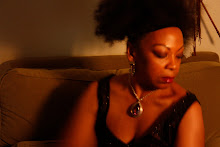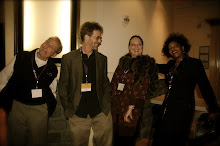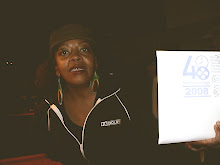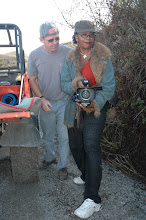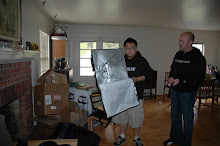


In honor of
celebrating Haitian culture, Rara Tou Limen Dance Troup received a standing
ovation at the opening of their Fall Season’s first full-length Repertory
Concert.
Limye pou
Ayiti…Lavi Kontinye!, Light for Haiti…Life Continues, is the choreo-prayer and
artistic offering to Haiti – performed by Rara Tou Limen at Laney College
Theatre in Oakland, CA.
As the media
topics have shifted to other parts of the world, for Haitian people, life will
not be the same for those severely affected by the earthquake.
RTL bridges the
gap in solidarity as it showcases the stories, struggles and spirit of Haiti,
the first free Black Republic in the world.
Known for
performing at festivals, cultural and academic institutions throughout the bay
area, including The San Francisco Ethnic Dance Festival, The Malcolm X Jazz
Arts Festival, the deYoung Museum, San Francisco Carnival, UC Berkeley and
more, RTL was established in 2004 by Artistic Director Portsha Jefferson.
“She is the
centerpiece,” says Patrice Roland, lead male dancer with Rara Tou Limen Dance
Troup.
 According to
Roland, RTL offers Bay Area residents and dancers nationwide the opportunity to
experience Haitian music, dance and culture through classes, workshops,
performances and educational events in the United States and Haiti.
According to
Roland, RTL offers Bay Area residents and dancers nationwide the opportunity to
experience Haitian music, dance and culture through classes, workshops,
performances and educational events in the United States and Haiti.
The season kicked
off with the Dance Workshop on Thursday, October 6th at the Malonga Casquelourd
Center in Oakland taught by world
renowned visionary choreographer, and educator Jeanguy Saintus, from
Haiti.
Saintus goes
globally teaching master classes around the world.
With the closing
of Haiti’s leading arts institution and cultural hub due to the major
earthquake, instructors and dance companies have no where to train and produce
quality and meaningful work.
Saintus is founder
of Ayikodans and Artcho Danse, a dance center training program for children and
adults in Port-au-Prince. The center provides scholarship programs to those
unable to afford tuition.
“What most of
America know about Haiti is its misery. They don’t know that the people are
happy when they dance and dream of being onstage. Helping others realize their
dreams to be onstage, especially those kids coming from a hard time, is what I
am about,” says Jeanguy Saintus.
Haiti born
Saintus, honorary guest choreographer for the season’s premier says, “I want to
give dance its place. First in Haiti, and then being able to share it with the
world. I first place myself where I come from,” says Saintus.
The ever-present
history and identity, the collective past and the personal present, the
paradoxical state of being that is the condition of the spirit of Haiti
reflects the resilience and strength of the culture and remains as a candlelit
ritual in the memory of the victims.
The performance
began in a darkened theatre with prayer chants echoing throughout as the
audience is taken on a meditative journey to the mythical land of the
ancestors, invocating stories, mystery, social identity and a quest for the
self.

The curtain rises
on a dimly lighted stage of blue lights with a large full moon superimposed in
the background. Blue lights shine on flowing silk panels of fabric across the
stage creating blue waters brought to evoke life. Shifting vertical lights
create an ocean of beautiful projections. The ever-changing landscape
materializes with magical inevitability.
The lighting is as
brilliantly realized as the visual design.
Permeated by
fascinating movement and style, dancers stomped out rhythms as a ritualistic
village scene arrives.
The embodiment of
the village people in magnificent colors fed the drummers as the audience
became one with the performance.
“The piece on the
ancestors is so moving and beautiful,” says Gena O’Brien, a bay area dancer
from Berkeley.
“There was
beautiful technique, not everyone can do that kind of dance with the freedom of
movement as seen here tonight,” says Samar Nassar, of Hipline Studio, in
Berkeley.
The beautiful
dance skirts take at least 6 to 8 yards of fabrics.
Daniel “Brav”
Brevil, musical director, from Haiti, brought down the house with traditional
Haitian Folkloric rhythms as well as contemporary jazz and reggae beats.
“In the last
dance, the Rara piece, the personalities of the musicians and the dancers come
out,” says Roland.
These experiences
are the heart of Saintus’, Jefferson’s and Brevil’s work.















